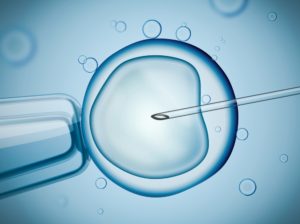The recent milestone event of a baby being born with the genes of three different parents was an amazing medical development for those suffering from hereditary diseases but the wider consequences of three-person IVF treatments have caused controversy worldwide.
World’s first 3 parent IVF baby
The Human Fertilisation and Embryology Authority (HFEA) approved ‘mitochondrial donation’ at UK fertility clinics on 15th December 2016. The process entails transferring the nucleus of a fertilised embryo into the shell of another woman’s egg. This technique was used by an American medical team to birth the first 3-Person IVF baby in Mexico and successfully ensured that the baby did not suffer from the same genetic disorder as his mother.
Three parent IVF in the UK
No children have been born out of three-person IVF in the UK as of yet but it is permitted for couples with mitochondrial diseases such as diabetes, Leigh syndrome and epilepsy. On approval of this procedure in 2015, MPs saw the opportunity for ‘real hope’ for families hoping to conceive. Others, however, have noted the complexities arising out of a child with three-person genetic makeup.
Three-parents?
Initially three-person IVF seems to provide an opportunity for those in relationships consisting of three people (colloquially named ‘thruples’) would be able to have a child that is genetically of the three parents – providing that a male was party to the relationship.
In England and Wales a three-parent household is possible but not necessarily viable, legally. Whilst more than two people can have parental responsibility for a child, the law only allows a child to have two legal parents.
Canada is home to the only child with three legal parents on its birth certificate. A lesbian couple wanted to ensure that the sperm donor would be an involved father and not just a donor – leading them to request a new form for parental rights with space for four parents. Vancouver lawyer, Barbara Findlay, said that now it is not just biology and genetic connections that determine a child’s parents but the ‘intention of the parents contributing to the creation of the child, and intend to raise the child’.
This is similar to the requirements of obtaining parental orders in surrogacy arrangements and emphasises that the development of what constitutes a parent may develop even further upon three-person IVF practices reaching the mainstream. Canada’s approach to three parent babies may affect the UK’s approach to the same – widening the grounds for what we consider to be a ‘nuclear’ family.

Family Resemblance
A common reason for people’s desire to give birth, engage in surrogacy arrangements or undertake IVF treatments is the desire to have children with their own genetic makeup. It is important to note that mitochondrial DNA represents less than 0.054 % of the total DNA of the child. As the donated mitochondrial DNA is not part of the nuclear DNA, it will not determine personal characteristics and traits such as personality, hair and eye-colour.
The above is positive in that, if two parents wish to enter into a three-person IVF arrangement, the child will resemble the two intended parents. However for the same reason three parents who wish to have a child with all of their genetic makeup may feel distanced from their relation to the child due to a lack of resemblance.
Pertinent to the above, it seems that the benefits of three-person IVF may be limited to the avoidance of mitochondrial disease as it serves little alternative purpose.
Fertility
Whilst the legalisation of three-person IVF and mitochondrial donation in the UK is limited to the avoidance of disease, similar practices were used in Ukraine to help a couple struggling with fertility.
A pronuclear transfer was used where the mother’s egg was fertilised with her partner’s sperm and then transferred into an egg take from a donor. As described above, the majority of the child’s genetic makeup is that of her legal parents but a small-percentage of the genetics of the egg-donor are inevitable. Controversially there was no instance of mitochondrial disease in this matter and it was instead used to combat infertility – widening the grounds for three-person IVF.
Is it for me?
The last few years have been filled with newspaper headlines, articles in scientific journals and legal commentary pondering the implications of this treatment. With the advance of technology in the fertility field we are constantly encroaching on unmarked territory – forming the majority of arguments for and against three-person IVF on hypothesised situations due to the lack of case-law in this area.
As a three-person child has not been born in England and Wales as of yet the classification for applicants for this procedure is unknown but we can assume that it will be limited to reducing the risk of mitochondrial disease.
Whilst the idea of a three-person baby has sparked interest in the polyamorous community, England and Wales would need to follow Canada in allowing for three person parental status to ensure that parties would not be vulnerable to legal restrictions. Such legal protections will also be absolutely crucial for the child-knowing who their parents are and what rights they have.
The Future of IVF
This procedure undeniably reflects the future of IVF. The case in Ukraine especially provides hope for those struggling with infertility who desire a child of their own. We can only hope that, if this proves to be the most effective way to battle infertility, England and Wales pushes this procedure to ensure everyone has the right to a child.
We want to support all individuals in realising their dreams of becoming parents. We offer legal advice on surrogacy arrangements, both domestic and international, adoption and fertility law. Our experienced Forming Families team of immigration and family lawyers know the struggles that many people go through, and offer help in a sensitive and proactive way.




